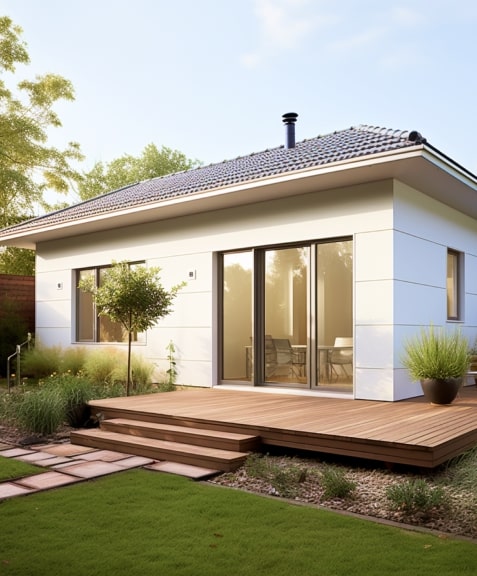
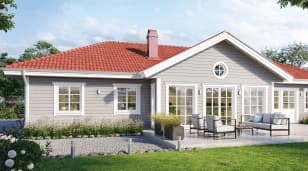
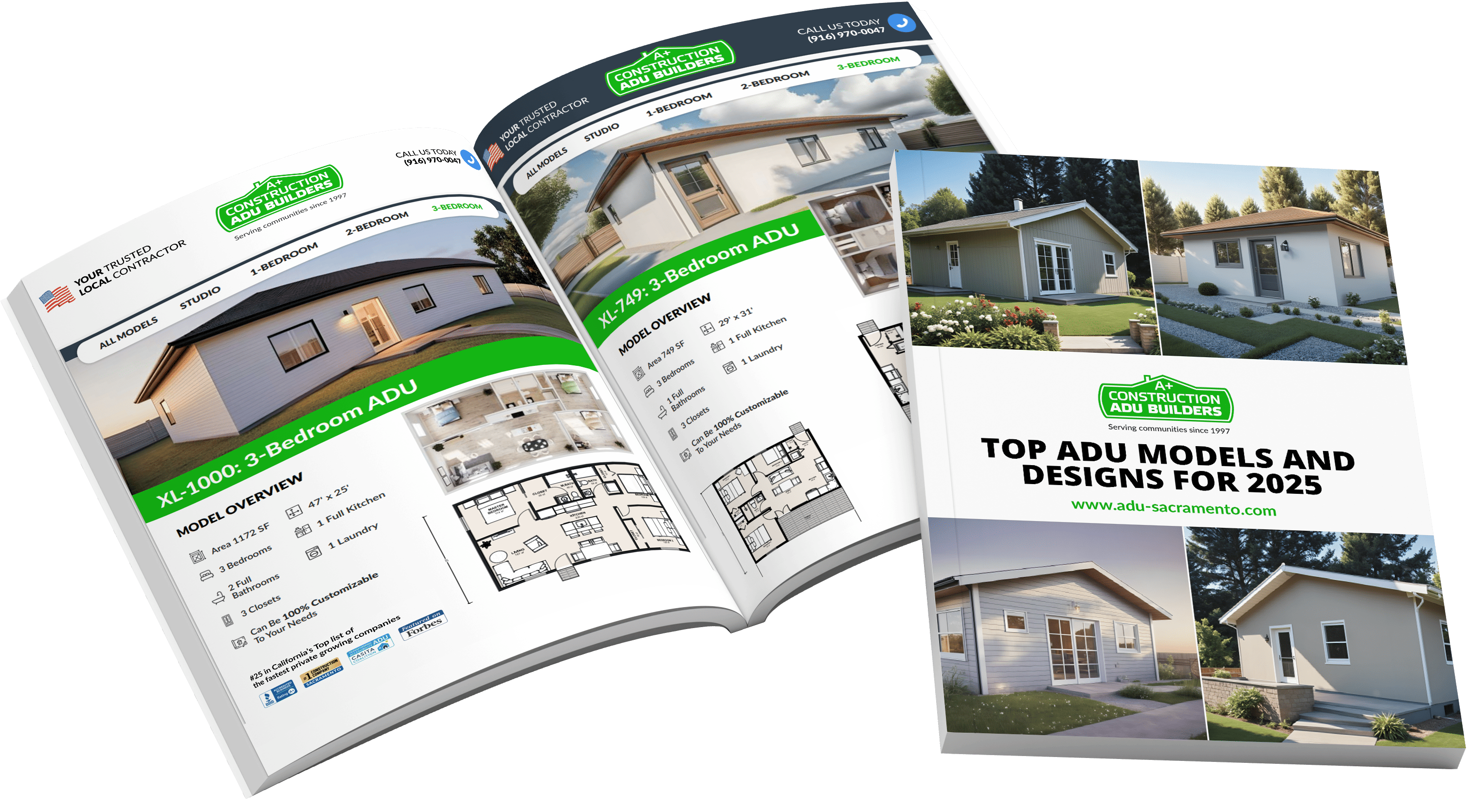

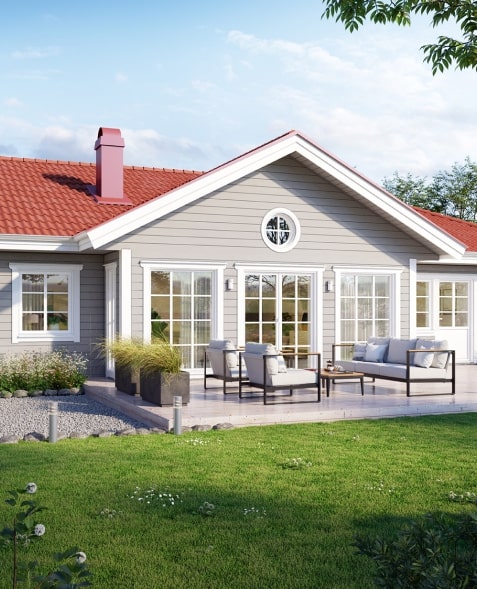
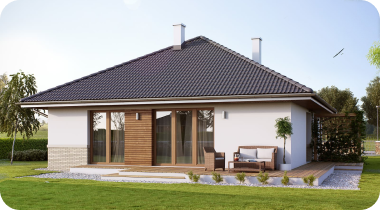
A link to download your FREE brochure will be in your inbox in 3 minutes
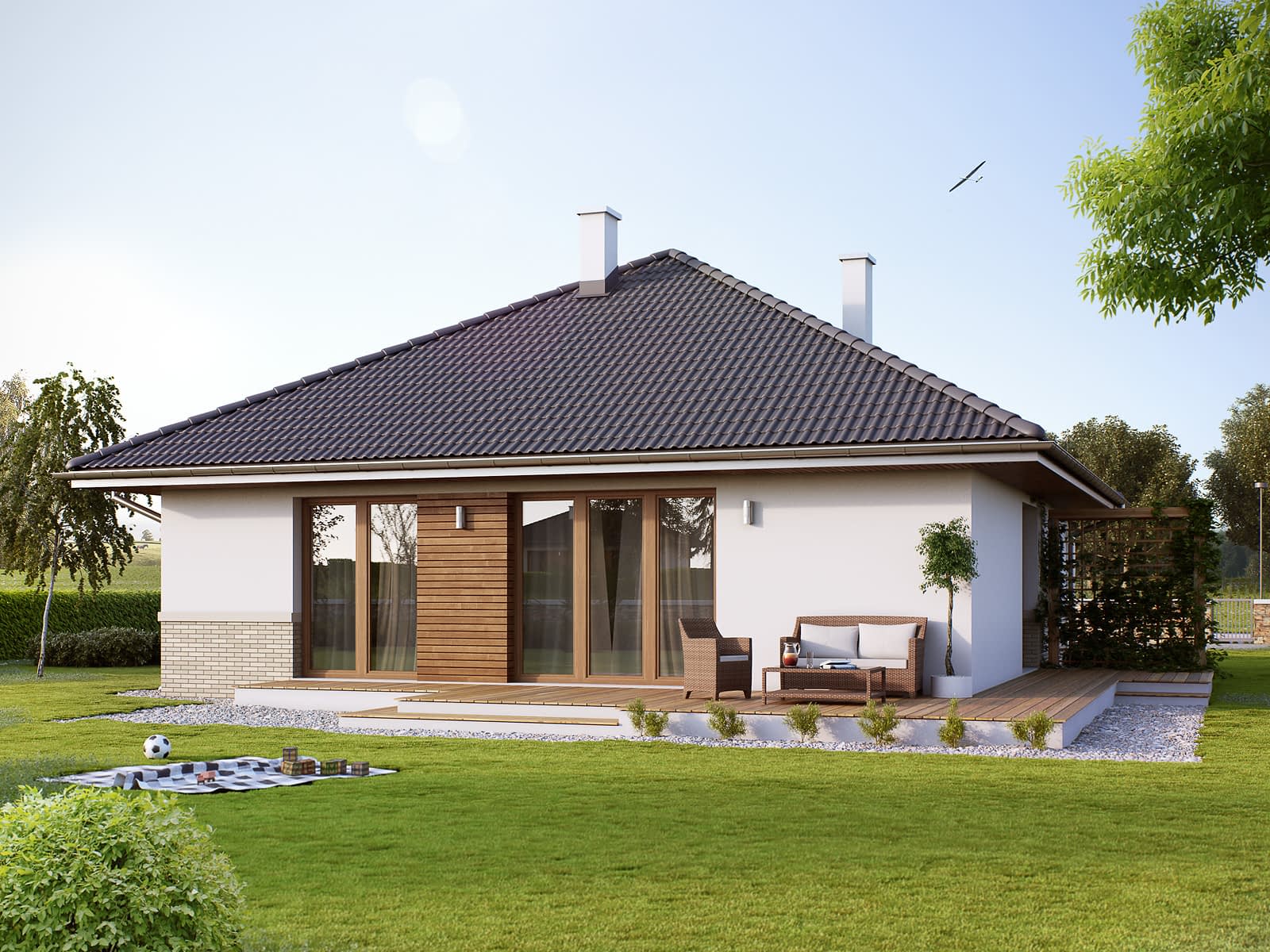





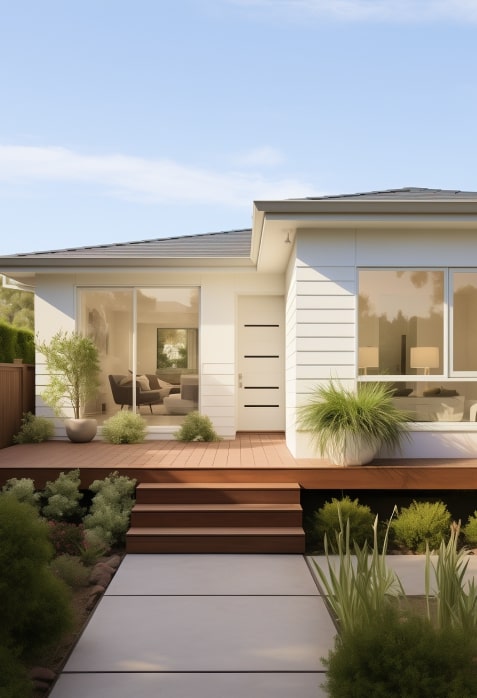
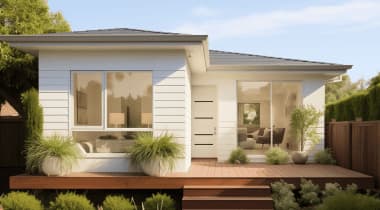











The final price may vary based on project specifics.
To get a free accurate quote tailored to your needs, book a consultation with us today!

The price per square foot provided is an average and may vary depending on project-specific details such as materials, location, complexity, and other factors. Actual costs may differ from the average provided.
It is recommended to obtain a detailed quote based on the specific requirements of your project.

Please note that the monthly payment displayed on this page is an estimate and is subject to variation based on the selected loan product, applicants credit score, loan amount, and other financial details. Actual monthly payment may differ from the estimate provided.
It is recommended to seek advice from a financial advisor or loan officer to obtain precise payment information tailored to individual circumstances.
 Your Trusted
Local Contractor
Your Trusted
Local Contractor
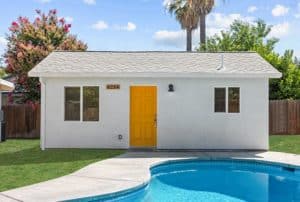 An accessory dwelling unit (ADU) is generally a separate living space created within the same property as your main house. This secondary housing unit may bring in generous rental income, provide a private space for your family members to live in, or serve as a pool house. In fact, this accessory structure can work as a guest house as well, providing temporary accommodation for visitors.
An accessory dwelling unit (ADU) is generally a separate living space created within the same property as your main house. This secondary housing unit may bring in generous rental income, provide a private space for your family members to live in, or serve as a pool house. In fact, this accessory structure can work as a guest house as well, providing temporary accommodation for visitors.
However, if we need to draw a line between these two notions, let’s discuss what makes ADUs different from traditional guest houses and which options offer vast opportunities!
Breaking down the distinction between these two types of spaces, we need to subject it to careful consideration.
Guest houses and ADUs are both mini houses built separately from the main residence, but their contents and configuration might be different in the following ways:
An accessory dwelling unit is a full-functioning, self-contained living space equipped with all amenities necessary for long-term living. This way, an ADU must have its own separate entrance, full bathroom, and cooking facilities inside. On the other hand, guest houses offer fewer amenities necessary for extended occupancy or permanent residency. For example, they may not have a full kitchen and offer a half bathroom because they imply the usage of the existing home.
Accessory dwelling units require the presence of proper insulation, ventilation, plumbing, and electrical systems. This is because they aim to work as permanent residents, used at all times of the year and for an extended period of time. Guest houses may serve as vacation summer cottages, so if you don’t install good insulation, your guest may not even notice it.
Local zoning laws, building codes, and local regulations treat ADUs differently than their guest house counterparts. This way, they establish clear minimum square footage requirements, setbacks from property lines, ceiling height figures, egress window regulations, and parking requirements. Alternatively, local authorities set more flexible requirements for guest houses. For example, in some jurisdictions, you can build a guest house closer to the property line, or its maximum square footage may be 600 sq. ft. rather than 1200 sq. ft. of ADUs.
Recently, in California, the rule that made short-term rentals problematic has been banned for ADUs. However, if you opt for JADUs, you still cannot rent them out if you don’t live on your property. Generally, guest houses don’t need the owner to occupy the main house, and this regulation restricting the use of guest houses as rental units is less stringent.
All in all, these secondary dwelling units vary in their designs and layouts due to their different nature. While an accessory dwelling unit is a house for long-term living, a guest house is a temporary shelter with less strict requirements for its amenities and structure.
As we have established, both an ADU and a guest house may have flexible designs. However, when we build these two types of structures, we usually focus on slightly different things.
The most important aspects to pay attention to when we build an ADU are comfort, space efficiency, and the multifunctionality of our units. At A+ Construction and Remodeling, we try to incorporate modern energy-efficient features that allow you to save on long-term use of the unit. Also, we opt for the most efficient layout fitting your available property, concentrating on strategic room and furniture arrangement.
With guest houses, the most important aspect is the privacy and hospitality of the unit. If the main purpose of the small house is to accommodate guests, we need to ensure they’re as comfortable in their stay as possible, providing the amenities and privacy they would expect from a temporary residence.
Many property owners choose to build ancillary habitable structures because it’s a cost-effective way to solve a whole array of issues, such as lack of living space or need for additional rental income.
The first thing that unites guest houses with accessory dwelling units is their rental income potential. Both ADUs and guest houses can generate rental income by providing guests or visiting relatives with their own space outside of the primary residence. For instance, Airbnb units are quite popular with short-term visitors from various cities across the country, no matter if these are guest houses or ADUs.
The second common thing for an ADU and guest house is their contribution to property value growth. It also affects property taxes, but in the situation of a housing shortage, many buyers perceive new dwellings as good investments, which significantly enhances the price on sale.
Lastly, a guest house and an ADU can serve as a space for personal retreat and relaxation. Whether it’s a cozy nook for sewing or crafting, playing instruments, recording music, painting, sculpting, or just sunbathing on a lounge chair in a sunroom, both guest houses and ADUs can fulfill the role of your peaceful hub.
However, unlike a guest house, an accessory dwelling unit (ADU) also presents such opportunities as:
To sum up, with many similarities shared by ADUs and guest houses, they still have distinctive uses that cater to different needs. Ultimately, the choice between an ADU and a guest house depends on space availability, long-term goals, and specific needs.
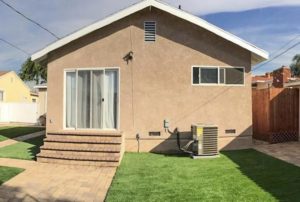
Both guest houses and accessory dwelling units (ADUs) are affordable housing options. Yet, a guest house usually tends to be cheaper than an ADU due to its nature. Designed as a temporary shelter, a guest house may not have all amenities, which results in lower construction and maintenance costs. Its more modest size and design often result in less complex utility needs and infrastructure requirements, as you can always go to the main house to use them.
On the other hand, an ADU necessitates creating new or upgrading existing utility connections, may require significant site preparation, can reach up to 1,200 sq. ft., and therefore needs more materials and labor, as well as frequently features more complex design. However, this all makes “ADU vs. guest house” costs highly dependent on the specific circumstances of each project. You can always order a prefab moderate-sized ADU that costs almost the same as its guest house counterpart.
ADUs boast an opportunity to generate steady rental income as tenants can live in them for a long time. By leasing out the secondary unit, many ADU owners ensure a stable flow of passive income, either offsetting mortgage and maintenance costs or simply creating an extra source of money for your family budget.
Additionally, depending on jurisdiction, some ADU owners enjoy tax incentives. For instance, some homeowners have an opportunity to reduce their property tax or deduct some maintenance expenses. This is because, in California, many local governments see ADU development as a positive trend that helps to fix the situation in the real estate sector, addressing housing insufficiency.
Building a guest house, you also may hope for a good potential rental income. Yet, if your guest house is only capable of accommodating temporary guests, you need to check in with relevant regulations in your area. That’s because some areas forbid or restrict short-term rental housing options. Nevertheless, if you live in a tourist-heavy area, you will likely receive great financial gain.
Besides, if you have a guest house, your relatives or friends can save costs on hotel accommodations. This is perfect for short stays with your loved ones, socializing, and hosting barbecue parties on vacations.
Guest houses are accessory structures with restrictions on long-term occupancy. Zoning laws regulate their use as such and establish more lenient rules when it comes to guest house parameters. The number of square feet they might occupy, the number of rooms, and their use—all these requirements consider the fact that their main purpose is temporary accommodation. In this regard, the process of obtaining a permit for building a guest house is relatively more straightforward compared to ADUs.
As for accessory dwelling units, they are subject to stricter building rules and safety standards as their aim is to provide long-term living arrangements to their residents, ensuring habitability and compliance with building codes. Regulations for ADUs often include specific size restrictions (height, square footage, etc.), the number of units allowed for a single-family home, setback requirements, parking requirements, and others. In general, ADUs must meet more comprehensive regulatory standards than guest homes to ensure safety and comfortable living conditions for the extended occupants.
All in all, obtaining ADU permissions is a more lengthy and complicated process, and building an ADU according to all the standards and laws may be a difficult task for a layperson. That’s why we strongly recommend potential ADU owners reach out to experienced ADU builders in Sacramento, California!
An ADU is a type of unit that can be either detached or attached to the main house. Contrariwise, a backyard cottage is always a standing-along structure in your backyard. An ADU can be a backyard cottage, but not all ADUs belong to this type of construction. Also, a backyard cottage may or may not be an ADU, depending on its designated purpose.
A casita is a small, separate dwelling unit that you build on your land near the main dwelling. Mostly, it’s just another name for additional small homes in southwestern regions. It’s similar to an ADU in the sense it can serve a variety of purposes, from guest accommodations to home offices. But it may not always have a full kitchen or a bathroom.
Yes, you can typically build a guest house on your property in California if you have full requirements set for this type of construction. Depending on their size, features, and relationship to the main house, guest houses may belong to ADU or may not. If they belong to ADUs, you’ll have to make sure the zone in which you build such a unit is appropriate for residential buildings. Besides, there are plenty of requirements your unit needs to meet, such as size, height, setbacks from the property line, etc.
For both a guest house and an ADU, you would need to adhere to the laws and regulations governing these house building. The process involves submitting plans to the local city authorities and waiting for approval. We recommend consulting with the local planning department to understand the specifics of your project.
Get a First Look at Real ADU Projects